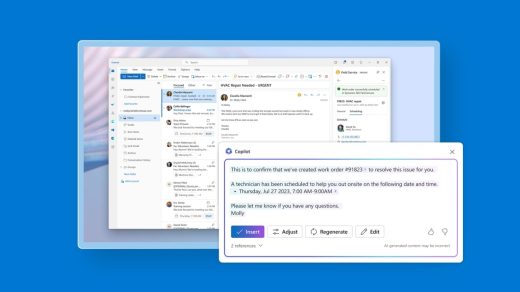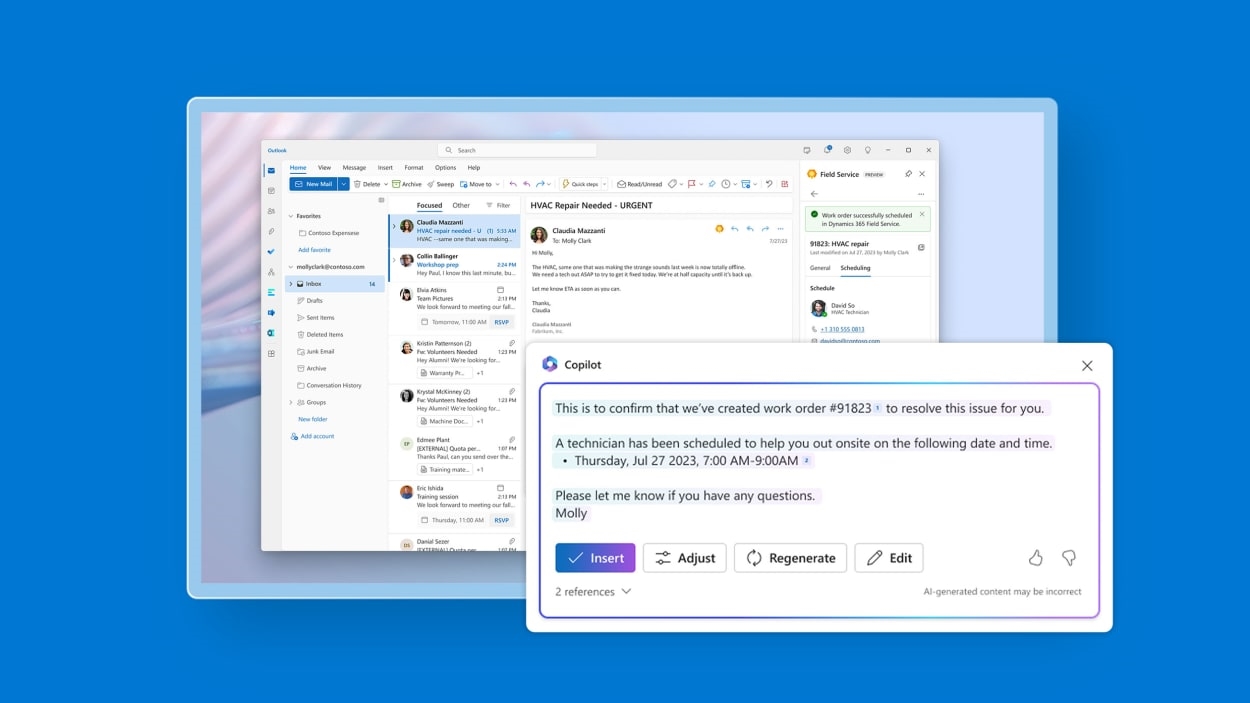Microsoft is enlisting its AI tool Copilot to help field technicians
Generative AI is developing a reputation for helping office workers with tasks like drafting emails, writing code, and summarizing documents.
Now, a set of new product features from Microsoft aims to bring some of that same power to frontline workers like field technicians and their managers, using artificial intelligence to help with filling out forms like work orders and handling shift scheduling. As with Microsoft’s existing Copilot AI features integrated into Microsoft Office and Microsoft-owned GitHub, the company aims to automate some of the tedious and bureaucratic elements of frontline work.
Those, says Charles Lamanna, Microsoft’s corporate vice president for business apps and platform, can be especially frustrating for employees having to fill out complex forms and cut-and-paste data on mobile devices.
“A lot of the same problems that we saw with technology in the office also exists on the front line,” he says.
Newly released research from Microsoft’s Work Trend Index survey series shows that one in two of 6,000 frontline employees surveyed reported being burned out at work, and more than 45% are likely to consider changing employers over the next year. And more than 60% complained of having to do repetitive tasks that take time away from more meaningful work—something that Microsoft hopes to help solve with the new AI tools.
“Basically, for folks who are working on work orders, time you spend managing work orders is time you’re not spending doing the main job,” says Lamanna. “That’s what drives that burnout.”
Among the new tools is a new Copilot feature for Dynamics 365 Field Service, Microsoft’s tool for managing field workers, which will let managers automatically generate draft work order forms populated with details from customer emails or requests sent via Microsoft Teams. The tool can also recommend technicians to assign to a particular work order based on factors like expertise and location and generate draft responses to customers explaining the status of their requests.
And AI integration with Shifts, Microsoft’s time scheduling management tool, will soon let managers use a chat interface and AI suggestions to help manage employee hours.
Field workers can also use AI to streamline responding to those work orders, even automatically pulling information from transcripts of voice recordings into the forms they fill out. And new integrations between Dynamics 365 Field Service and Teams will effectively let field workers use Teams as a single interface to work orders and information they need, without having to switch between apps or copy and paste data. The new AI functionality will also intelligently suggest relevant data to attach to Teams messages as frontline workers communicate with their colleagues and managers.
Lamanna says that, in the future, the AI features will likely be automatically integrated into customer workflows. For now, they are in public preview mode and can be activated by companies with subscriptions to the underlying services who want to use them. As companies do, Lamanna predicts the features will be easily adopted, citing previous experience with generative AI tools that communicate conversationally and integrate closely with existing software.
“The big thing is, we have to bring the Copilot where the users already are,” he says.
(21)



